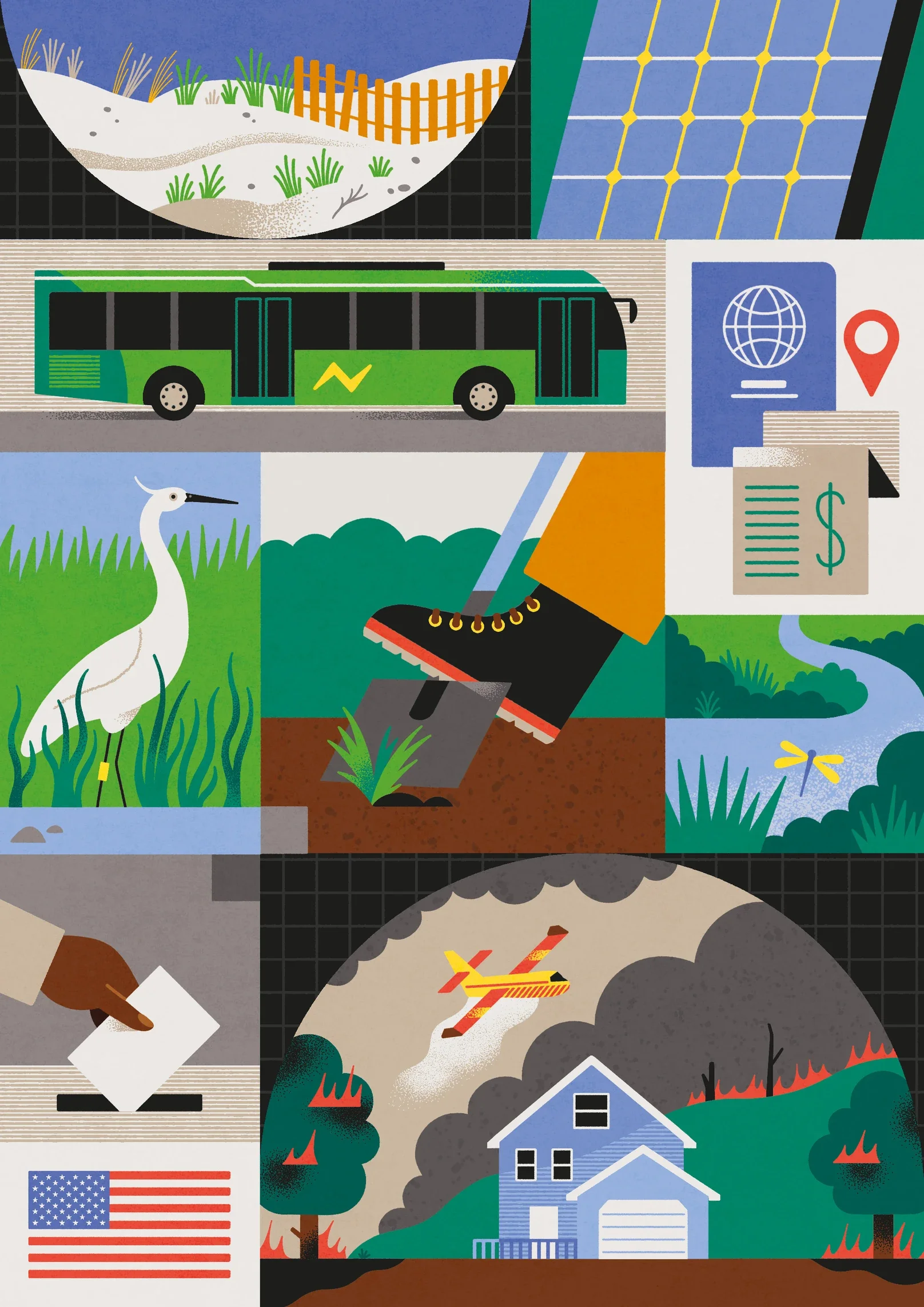To Weather the Growing Costs of Climate Disasters, Some States Are Getting Creative
By Maddie Burakoff for Audubon Magazine
In 2023, a deadly wildfire fueled by powerful winds and drought swept Maui, leaving vibrant communities and coastal habitat in ruin. As Hawaiʻi rebuilds at a cost of more than $12 billion, officials are preparing for a future of more extreme events. In May, the state enacted a first-in-the-nation “green fee”: a tax on tourists to fund climate preparedness efforts like uprooting invasive plants to reduce fire risk, hardening homes against hurricanes, and restoring reefs to buffer storm surges. “Hawaiʻi cannot wait for the next disaster to hit before taking action,” said Governor Josh Green. “We must build resiliency now.”
As climate change arrives at the doorsteps of many Americans, residents have been saddled with the costs of more frequent and intense disasters, with a record number of extreme weather events exceeding $1 billion in damage. At the same time, insurance companies are raising rates or fleeing disaster-prone areas entirely. What’s more, this year the Trump administration rolled back federal funding intended to prepare for disasters and aid recovery after they hit—cutting FEMA’s relief capacity and slashing grant programs across agencies that supported flood prevention, extreme heat planning, and coastal resilience.
All of that has left state governments to foot increasing bills for climate adaptation work. “States are now the first line of defense for a lot of that,” says Ava Gallo, climate and energy program manager for the National Caucus of Environmental Legislators. As funding gaps grow, some state legislatures are testing out new models for raising money to face a warming world. “We’ve seen a lot of people get creative,” Gallo says.
In Hawaiʻi, the green fee—which is expected to raise $100 million a year—makes sense given that tourists strain the same natural environments that bring them to the islands, says Chris Benjamin, chair of the Hawaiʻi Climate Advisory Team.
Click here to read the full story from the Fall 2025 issue of Audubon Magazine

